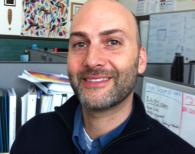By Ilana Fonariov
"I really wanted to see a change in my school site where there was a lot of bullying and name-calling happening. Issues included low self-esteem, teasing, and girls getting mocked for dressing like tomboys," said Jasmine Frye, the student support specialist for an after-school program at an east Oakland elementary school, located in a low-income Latino community. She came to the school by-way of Bay Area Community Resources and Americorp, right after completing her sociology degree at UC Davis.
Her school is located in an area with high rates of violence and crime in an underserved community where liquor stores outnumber the grocery stores. The school is the main resource site for children of the area.“I've seen a lot of kids who've seen someone shot in front of them, seen a lot of negative things and that definitely impacted their lives and the way they address things,” she said.
oakland unified school district

By David Yusem
Program Manager, Restorative Justice
Oakland Unified School District
Harmed people harm people. That is a phrase we use a lot in restorative justice.
Traditionally in our schools we have used punishment as a way to distance ourselves from unwanted behavior. I am not aware of any studies proving that suspending for misbehavior increases attendance, achievement, or graduation rates for the rest of the student population.
However, there are plenty of studies indicating a direct correlation between suspension and decrease in attendance, graduation, and drop out rates for the suspended student. We call this the school-to-prison pipeline, and here in Oakland, CA, it particularly affects African-American students. At Oakland Unified School District, African-American students make up about 34 percent of the population and, as of the beginning of last year, they made up 67 percent of the suspensions.
